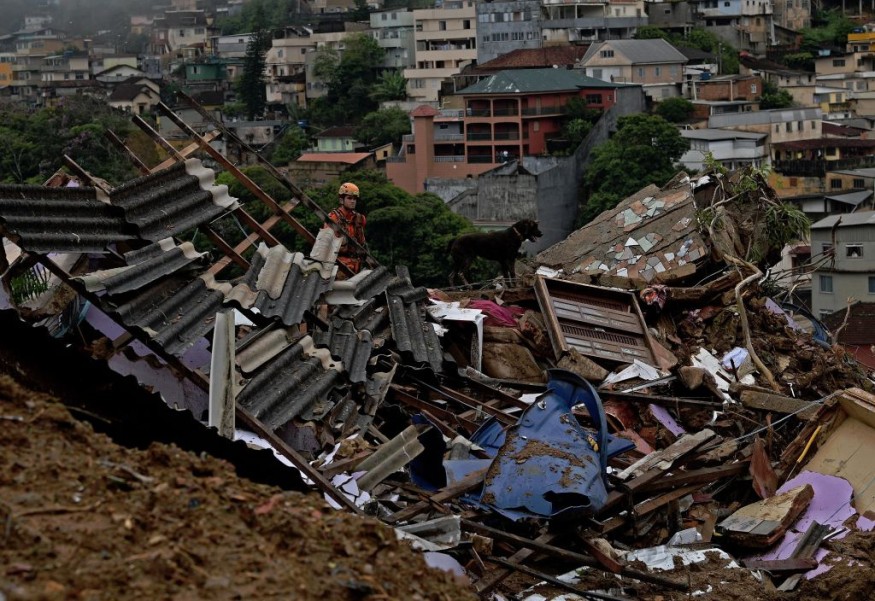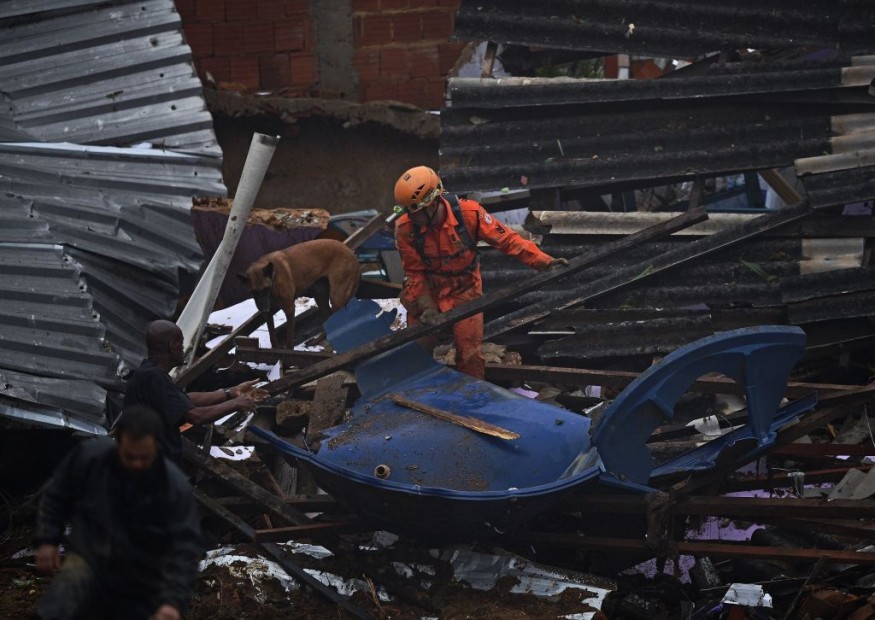When severe rains rushed across a hilly part of Rio de Janeiro state, mudslides and floods killed at least 34 people, and authorities worry that the death toll may grow as rescuers checked affected regions on Wednesday.
According to the state fire department, more than 180 troops were already operating in the affected Petropolis district, which experienced hundreds of fatalities in 2011 due to severe rains.
Within three hours Tuesday, the area received 25.8 cm (just over 10 inches) of rain, nearly as much as the preceding 30 days combined, according to ABC News.

A footage shared on social media showed how cars and residences were swept away by landslides and water whirling through the city of Petropolis and adjacent areas.
The municipal hall of Petropolis announced in a statement that the torrential rains left "a high number of incidents and victims" and that rescue and recovery efforts were ongoing to "a high number of incidents and victims."
Related Article : California Cools Down After Experiencing a Period of Intense Heat
Bolsonaro's Statement
On Twitter, Brazilian President Jair Bolsonaro, who is on a trip to Russia, said he asked his ministers to provide prompt assistance to the victims.
Extreme weather in Brazil's commodity powerhouse echoes throughout the world, driving up prices for everything from soybeans to metals.
Crop losses in the country's south have stifled what was intended to be a record year for oilseed output in the world's largest producer, as mentioned by Bloomberg. Meanwhile, the country's northern half is plagued by the inverse problem: an overabundance of water.
Link to Climate Change

According to Don Keeney, a meteorologist with commercial forecaster Maxar, northern Brazil is "too rainy" while the south is "too dry." According to Carine Gama, a meteorologist at Sao Paulo-based Climatempo, this is a common pattern induced by the La Nina phenomena, exacerbated by other variables such as Atlantic warming.
Few families are adequately prepared for natural disasters such as hurricanes, tornadoes, droughts, floods, and wildfires. As the climate has changed, extreme weather events have become more intense and frequent in recent years.
Climate Change and Extreme Weather
Unexpected, unusual, severe, or unseasonal weather; weather at the extremities of the historical distribution-the range seen in the past; and weather at the extremes of the historical distribution-the range observed in the past. Extreme weather is sometimes characterized as being in the most unusual 10 percent of a location's documented weather history.
There is evidence that some severe weather events are becoming more frequent and intense due to climate change. Changes in the frequency or amplitude of severe heat and cold events, as well as increases in heavy precipitation and drought severity, have the greatest level of confidence in the attribution of extreme weather and other phenomena to human climate change.
According to Thomas M. Kostigen, the author of a new National Geographic book called the Extreme Weather Survival Guide, preparing for natural catastrophes is essential.
For more news about the environment , don't forget to follow Nature World News!
© 2025 NatureWorldNews.com All rights reserved. Do not reproduce without permission.





